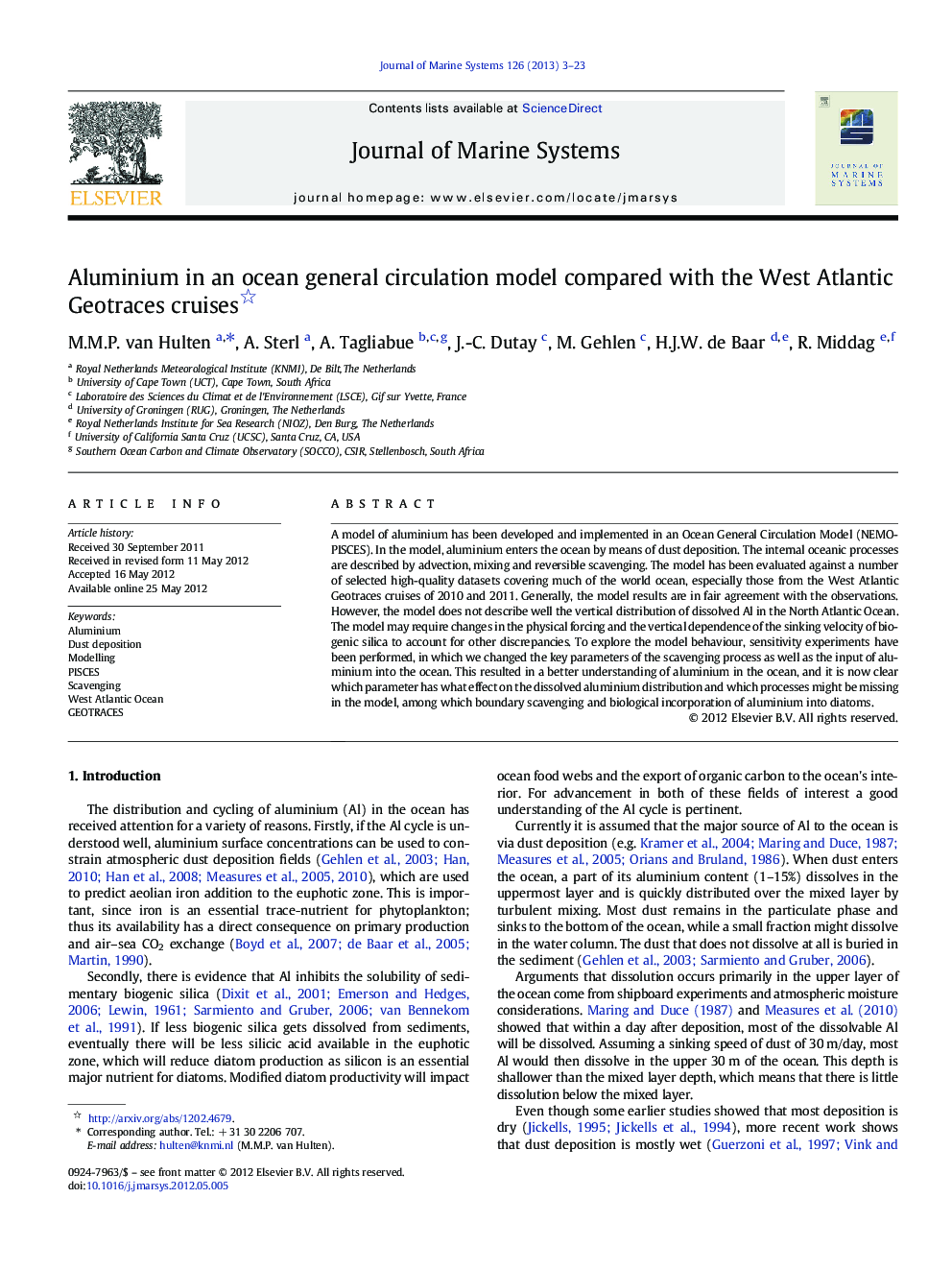| Article ID | Journal | Published Year | Pages | File Type |
|---|---|---|---|---|
| 6387192 | Journal of Marine Systems | 2013 | 21 Pages |
Abstract
A model of aluminium has been developed and implemented in an Ocean General Circulation Model (NEMO-PISCES). In the model, aluminium enters the ocean by means of dust deposition. The internal oceanic processes are described by advection, mixing and reversible scavenging. The model has been evaluated against a number of selected high-quality datasets covering much of the world ocean, especially those from the West Atlantic Geotraces cruises of 2010 and 2011. Generally, the model results are in fair agreement with the observations. However, the model does not describe well the vertical distribution of dissolved Al in the North Atlantic Ocean. The model may require changes in the physical forcing and the vertical dependence of the sinking velocity of biogenic silica to account for other discrepancies. To explore the model behaviour, sensitivity experiments have been performed, in which we changed the key parameters of the scavenging process as well as the input of aluminium into the ocean. This resulted in a better understanding of aluminium in the ocean, and it is now clear which parameter has what effect on the dissolved aluminium distribution and which processes might be missing in the model, among which boundary scavenging and biological incorporation of aluminium into diatoms.
Related Topics
Physical Sciences and Engineering
Earth and Planetary Sciences
Oceanography
Authors
M.M.P. van Hulten, A. Sterl, A. Tagliabue, J.-C. Dutay, M. Gehlen, H.J.W. de Baar, R. Middag,
